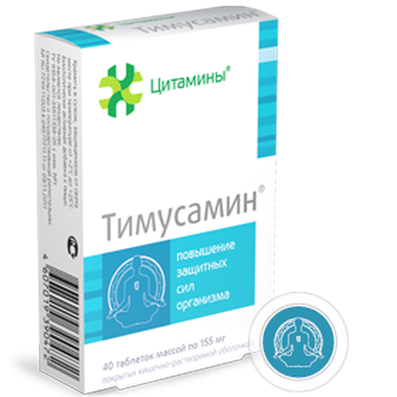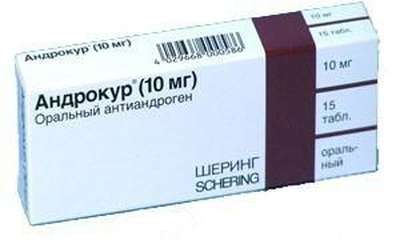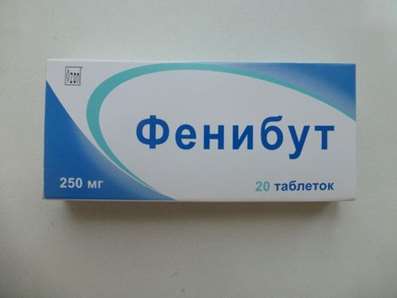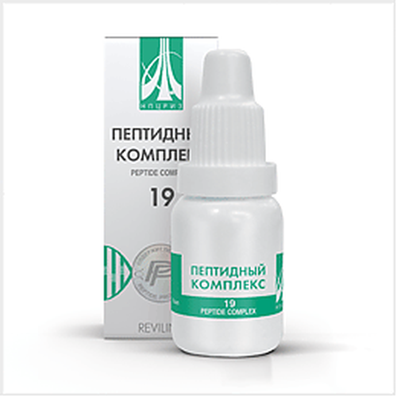Instruction for use: Nalgesin forte
I want this, give me price
Active substance Naproxen
ATX code M01AE02 Naproxen
Pharmacological group
Non-steroidal anti-inflammatory drug [NSAIDs - Propionic acid derivatives]
Nosological classification (ICD-10)
G43 Migraine
The pain of migraine, Migraine, hemiplegic migraine, Migraine headache, A migraine attack, Continuous headache, hemicranias
H60.9 External otitis, unspecified
Inflammation of external auditory canal, Otitis, Chronic external otitis media
H66.9 Otitis media, unspecified
Chronic otitis, Otitis, otitis media, middle ear infections, Otitis media in children
J02.9 Acute pharyngitis, unspecified
purulent pharyngitis, Acute nasopharyngitis,Limfonodulyarny pharyngitis
J03.9 Acute tonsillitis, unspecified (angina agranulocytic)
Sore throat infections, Acute tonsillitis, Angina, Follicular tonsillitis, Angina alimentary-hemorrhagic, Secondary sore throat, Sore throat primary, Angina follicular, Angina, Inflammatory diseases of the tonsils, Catarrhal angina, Lacunar angina, Acute Sore Throat, Tonsillitis, Tonsillitis acute, Tonsillar angina, Follicular sore throat, Bacterial tonsillitis
J31.2 Chronic pharyngitis
Pharyngitis chronic, Exacerbation of inflammatory diseases of the pharynx and oral cavityHypertrophic pharyngitis, Inflammatory process of pharynx, Sore Throat Infection, Infectious-inflammatory diseases of the pharynx, Infectious-inflammatory diseases of the oral cavity and pharynx, Atrophic pharyngitis
J35.0 Chronic tonsillitis
Tonsillitis chronic, Inflammatory diseases of the tonsils, Angina chronic, Chronic hypertrophic tonsillitis, Tonsillar angina
K08.8.0 * Painful toothache
Dentinal pain, Dentinal pains, Pain pulpitis, Anesthesia in dentistry, Pain syndromes in dental practice, Pain after removal of tartar, Pain when extracting a tooth, Toothache, Pain after dental interventions
M06.9 Other specified rheumatoid arthritis
Rheumatoid arthritis,Pain syndrome in rheumatic diseases, Pain in rheumatoid arthritis, Inflammation in rheumatoid arthritis, Degenerative forms of rheumatoid arthritis, Children's rheumatoid arthritis, Exacerbation of rheumatoid arthritis, Acute articular rheumatism, Rheumatic arthritis, Rheumatic polyarthritis, Rheumatoid arthritis, Rheumatic polyarthritis, Rheumatoid arthritis, Rheumatoid arthritis of active course, Rheumatoid arthritis, Rheumatoid polyarthritis, Acute rheumatoid arthritis, Acute rheumatism
M07.3 Other psoriatic arthropathies (L40.5 +)
Arthritis psoriatic, The generalized form of psoriatic arthritis, Psoriatic arthritis
M08 Juvenile [juvenile] Arthritis
Juvenile arthritis, Juvenile chronic polyarthritis, Juvenile chronic arthritis, Juvenile rheumatoid arthritis, Arthritis juvenile chronic
M10.9 Gout, unspecified
Arthritis Gouty, Acute gouty arthritis, Acute attack of gout, Gouty Arthritis, Articular syndrome with exacerbation of gout, Articular syndrome with gout, Urarturia, Chronic arthritic arthritis, Acute gout, Salt diathesis
M19 Other arthrosis
M35.3 Rheumatic polymyalgia
Pseudoarthritis rhizomelic, Rheumatic polymyalgia, Pain syndrome in rheumatic diseases, Muscle pain with rheumatism, Extra-articular rheumatism, Extra-articular rheumatic syndrome, Extra-articular rheumatic diseases, Extra-articular rheumatic soft tissue injury, Extra-articular forms of rheumatism, Rheumatic soft tissue damage, Rheumatism of soft tissues, Rheumatic diseases of soft tissues, Rheumatic diseases of the periarticular soft tissues, Rheumatic affections of soft tissues, Rheumatic collagen diseases
M45 Ankylosing spondylitis
Ankylosing spondylarthrosis, Marie-Strumpel disease, Ankylosing spondylitis, Pain syndrome in acute inflammatory diseases of the musculoskeletal system, Pain syndrome in chronic inflammatory diseases of the musculoskeletal system, Bechterew's disease, Ankylosing spondylitis, Diseases of the spinal column, Rheumatic spondylitis, Bechterew-Marie-Strumpel disease
M54.1 Radiculopathy
Acute sciatica, Radiculopathy, Radiculitis, Radiculitis with radicular syndrome, Acute radiculopathy, Pain syndrome with radiculitis, Subacute radiculitis, Radiculitis, Chronic radiculitis, Diseases of the spinal column
M54.4 Lumbago with sciatica
Pain in the lumbosacral spine, Lumbago, Sciatica, Lumbar syndrome
M54.9 Dorsalgia, unspecified
Pain syndrome with radiculitis, Pain syndrome in the back,Pain with radiculitis, Degenerative changes in the spine, Degenerative and dystrophic disease of the spine and joints, Degenerative disease of the spine, Osteoarthrosis of the spine, Painful lesions of the spine
M65 Synovitis and tendosynovitis
Acute tenosynovitis, Tendovaginitis (tenovaginitis), Tendosinovit (tenosynovitis), Tendovaginitis, Osteoarthritis in musculo-articular diseases, Inflammatory disease of soft tissues, Nonspecific tenosynovitis, Tendosinovit
M71 Other bursopathies
Bursitis, Bursopathy, Diseases of soft tissues, Osteoarthritis in musculo-articular diseases, Inflammatory disease of soft tissues, Subacute bursitis
M79.1 Myalgia
Myofascial pain syndromes ,Pain syndrome in musculo-articular diseases, Pain syndrome in chronic inflammatory diseases of the musculoskeletal system, Pain in the muscles, Tenderness of muscles, Muscular soreness in severe physical exertion, Painful conditions of the musculoskeletal system, Pain in the musculoskeletal system, Pain in the muscles, Pain at rest, Muscle aches, Muscle pain, Musculoskeletal pain, Myalgia, Muscle pain, Muscle pain at rest, Muscle pain, Muscular pain of non-rheumatic origin, Muscle pain of rheumatic origin, Acute muscle pain, Rheumatic pain, Rheumatic pains, Myofascial syndrome, Fibromyalgia
M79.2 Neurology and neuritis, unspecified
Pain syndrome with neuralgia, Brachialgia, Occipital and intercostal neuralgia, Neuralgia, Neuralgic pain, Neuralgia, Neuralgia of intercostal nerves,Neuralgia of the posterior tibial nerve, Neuritis, Neuritis traumatic, Neuritis, Neurological Pain Syndromes, Neurological contractures with spasms, Acute neuritis, Peripheral neuritis,Post-traumatic neuralgia,Severe pain of a neurogenic nature, Chronic neuritis, Essential neuralgia
M89.9 Disease of bone, unspecified
Local osteopathy, Disturbance of bone mineralization processes, Osteopenia, Pain syndrome in acute inflammatory diseases of the musculoskeletal system, Pain syndrome in chronic inflammatory diseases of the musculoskeletal system, Pain in the musculoskeletal system, Infection of bones, Ossalgia, Pain in chronic degenerative bone diseases
N70 Salpingitis and oophoritis
Adnexitis, Inflammatory diseases of female genitalia, Inflammatory diseases of female genital organs, Infection of the genitals, Oophoritis, Acute adnexitis, Salpingitis, Salpingo-oophoritis, Chronic inflammatory diseases of the ovaries, Inflammation of the ovaries
N94.6 Dysmenorrhea Unspecified
Pain during menstruation, Functional disorders of the menstrual cycle, Menstrual cramps, Emmeniopathy, Pain during menstruation, Painful menstrual irregularities, algomenorrhea, algomenoreya, Pain smooth muscle spasm, Pain spasm of smooth muscles (renal and biliary colic, intestinal spasms, dysmenorrhea), Pain spasm of smooth muscles of internal organs (kidney and biliary colic, intestinal spasms, dysmenorrhea), Disalgomenoreya, dysmenorrhea, Dysmenorrhea (essential) (Exfoliative), menstrual disorder, menstruation painful, metrorrhagia, Violation of the menstrual cycle, Menstrual irregularities, Prolaktinzavisimoe menstrual disorders, Prolaktinzavisimoe menstrual dysfunction, Pain spasm of smooth muscles of internal organs, Spasmodic dysmenorrhea, Primary disalgomenoreya
R50.0 Fever with chills
High fever, Heat, Chills, elevated temperature, hyperthermia, Prolonged fever, Feverish syndrome, Fervescence, Increased body temperature in infectious and inflammatory diseases, fever Symptoms, febrile syndrome, Febrile state, Fever, Fever in infectious and inflammatory diseases, Fever with SARS, Fever with cold, Fever for colds, febrility, Feverish condition with flu, Feverish state in infectious and inflammatory diseases , Feverish state of infectious diseases and in the postoperative period, Feverish condition for colds, Febrile of different genesis, Feverish syndrome on the background of infectious diseases, Feverish syndrome in infectious and inflammatory diseases, Feverish syndrome with colds, Feverish syndrome of different genesis, Increased temperature for colds, Increased temperature at catarrhal and infectious and inflammatory diseases, Increased body temperature in cold, etc., Increased body temperature in cold and other infectious and inflammatory diseases, Increased body temperature in cold and other infectious and inflammatory diseases, Fever during pregnancy, Fever with thrombocytopenia, Febrile reaction in blood transfusion
R51 Headache
Pain in the head, Cephalgia, Pain with sinusitis, Pain in the back of the head, Painful headache, Headache of vasomotor genesis, Headache of vasomotor origin, Headache with vasomotor disorders, Headache, Neurological headache, Serial headache
R52.9 Unspecified Pain
Pain after cholecystectomy, Pain shooting, Non-malignant pain, Obstetric and gynecological pain, Pain syndrome, Pain in the postoperative period, Pain in the postoperative period after orthopedic surgery, Pain of inflammatory genesis, Pain than cancer genesis, Pain syndrome after diagnostic procedures, Pain after surgery Diagnostic, Pain after surgery, Pain after orthopedic surgery, Pain after injuries, Pain after the removal of hemorrhoids, Pain at the non-rheumatic inflammation of nature, Pain in inflammatory lesions of the peripheral nervous system, Pain in diabetic neuropathy, Pain in acute inflammatory diseases of the musculoskeletal system, Pain when the tendon pathology, Pain smooth muscle spasm, Pain spasm of smooth muscles (renal and biliary colic, intestinal spasms, dysmenorrhea), Pain spasm of smooth muscles of internal organs, Pain spasm of smooth muscles of internal organs (kidney and biliary colic, intestinal spasms, dysmenorrhea), Pain in trauma syndrome, Pain with injuries and after surgical interventions, Pain in chronic inflammatory diseases of the musculoskeletal system, Pain with duodenal ulcer, Pain syndrome in gastric ulcer, Pain syndrome in gastric ulcer and duodenal ulcer, pain, Pain during menstruation, pain syndromes, painful condition, Painful foot fatigue, Sore gums when wearing dentures, Soreness of the cranial nerves exit points, Painful menstrual irregularities, Painful dressings, Painful muscle spasm, Painful teeth growth, Melosalgia, Pain in the area of the surgical wound, Pain in the postoperative period, Pain in the body, Pain after diagnostic procedures, Pain after orthopedic surgery, Pain after surgery, The pains of the flu, Pain in diabetic polyneuropathy, Pain for burns, Pain during sexual intercourse, Pain during diagnostic procedures, Pain during therapeutic procedures, for colds Pain, Pain in sinusitis, Pain in trauma, Pain traumatic, The pain in the postoperative period, Pain after diagnostic procedures, The pain after sclerotherapy, Pain after surgery, postoperative Pain, Pain postoperative and posttraumatic, posttraumatic pain, Pain when swallowing, Pain in infectious and inflammatory diseases of the upper respiratory tract, The pain of burns, The pain in traumatic muscle injury, Pain in trauma, The pain of tooth extraction, The pain of traumatic origin, Pain caused by spasm of smooth muscles, Expressed pain syndrome, Expressed pain syndrome, traumatic origin, Postoperative pain, Post-traumatic pain, Post-traumatic pain syndrome, Torpid pain, Traumatic pain, Traumatic pain, Mild pain, Moderately severe pain, Moderate pain, Polyarthralgia with polymyositis
R68.8.0 * Inflammatory syndrome
Painful syndrome of inflammatory genesis, Pain syndrome with inflammation of non-rheumatic nature, Pain syndrome with inflammatory lesions of the peripheral nervous system, Painful inflammation of the shoulder joint, Painful inflammation after trauma or surgery, Painful inflammation after surgery, Painful hemorrhoids, Inflammation of the tympanic membrane, Inflammation of the larynx, Inflammation of the gums, Inflammation of cellulose, Inflammation of lymph nodes, Tonsillitis, Inflammation of muscles, Inflammation of soft tissues, Inflammation of the mouth, Inflammation after surgery and trauma, Inflammation after orthopedic surgery, Inflammation after trauma, Inflammation in rheumatoid arthritis, Inflammation of the middle ear, Inflammatory gum disease, Inflammatory diseases of the eyelids, Inflammatory eye diseases, Inflammatory swelling of soft tissues, Inflammatory processes, Inflammatory processes after surgical interventions, Inflammatory process, Inflammatory Syndrome, Inflammatory syndrome of non-rheumatic origin, Inflammatory syndrome after surgery, Purulent infections, Infringements of function of a liver of an inflammatory etiology, Acute inflammation of the musculoskeletal tissue, Pre-inflammatory soft tissue inflammation
T14.3 Dislocation, sprain and damage to the capsular-ligamentous apparatus of the joint of the unspecified area of the body
Painful stretching of muscles, Pain and inflammation in tension, Dislocation of dislocation, Degenerative changes in the ligamentous apparatus, Edema due to sprains and bruises, Edema after interventions for sprains, Damage and rupture of ligaments, The musculoskeletal system is damaged, Damage to ligaments, Damage to the joints, Ligament ruptures, Tendon tendons,Ruptures of the tendons of muscles,Stretching, Crick, Stretching of the muscle, Sprain, Tension of the tendons, Extensions,Stretch muscles, Sprains, Tension of the tendons, Injury of the musculoskeletal system, Injuries to the joints, Injuries of capsule-articular tissues, Injuries of the osteoarticular system, Injuries to ligamentsInjuries to the joints, Joint wounds, Stretching of the ligamentous apparatus, Habitual stretching and tearing
T14.9 Injury unspecified
Pain syndrome after trauma, Pain syndrome with injuries, Pain syndrome with trauma and after surgery, Pain in case of injury, Pain of a traumatic nature, Joint pain with injuries, Postoperative and post-traumatic pain, Pain in case of injury, Pain of a traumatic origin, Severe pain syndrome of traumatic origin, Deep tissue damage, Deep scratches on the trunk, Closed injury, Minor Household Injuries, Minor skin damage, Violations of the integrity of soft tissues, Uncomplicated trauma, Extensive traumatic injury, Acute pain syndrome of traumatic origin, Edema with trauma, Postponed sports injuries, Post-traumatic pain, Soft tissue injuries, Joint wounds, Sports injuries, Injury, Traumatic pain, Traumatic pains, Traumatic infiltrate,Injuries to sports
T88.9 Complication of surgical and medical care, unspecified
Pain in the postoperative period, Pain in the postoperative period after orthopedic surgery, Pain syndrome after diagnostic procedures, Pain after surgery Diagnostic, Pain after surgery, Pain after orthopedic surgery, Pain after the removal of hemorrhoids, Pain in the application of excimer laser, Pain with injuries and after surgical interventions, Pain syndromes in the dental practice, Painful diagnostic intervention, Painful diagnostic manipulations, Painful instrumental diagnostic procedures, Painful instrumental manipulation, Painful treatments, Painful manipulations, Painful dressings, Painful therapeutic interventions, Pain in the area of the surgical wound, Pain in the postoperative period, Pain after diagnostic procedures, Pain after orthopedic surgery, Pain during diagnostic procedures, Pain during therapeutic procedures, Pain in orthopedics, The pain in the postoperative period, Pain after diagnostic procedures, The pain after sclerotherapy, The pain after dental surgery, postoperative Pain, Pain postoperative and posttraumatic, The pain of tooth extraction, Inflammation after surgery or injury, Inflammation after orthopedic surgery, Inflammation after surgery, The inflammatory syndrome after surgery, Festering postoperative fistula, Operating wound, Complications after tooth extraction
Composition
Tablets covered with a film membrane 1 tab.
core
active substance:
naproxen sodium 550 mg
auxiliary substances: povidone K30; ICC; talc; magnesium stearate; purified water
shell: dye Opadry YS-1R-4216 (hypromellose, titanium dioxide (E171), macrogol, indigo carmine dye (E132)
Description of dosage form
Oval biconvex tablets with a risk on one side, covered with a film coating of blue color.
pharmachologic effect
Pharmacological action - anti-inflammatory, antipyretic, analgesic.
Pharmacodynamics
Nalgesin forte, is a drug naproxen, has analgesic, antipyretic and anti-inflammatory effect. The mechanism of action is associated with a non-selective inhibition of the activity of COX-1, COX-2.
Tablets, film-coated, Nalgesin forte dissolve well, quickly absorbed from the digestive tract and provide a rapid onset of the analgesic effect.
Pharmacokinetics
Absorption from the gastrointestinal tract - fast and complete, bioavailability - 95% (eating practically does not affect either the completeness or the rate of absorption). Tmax - 1-2 hours, the connection with plasma proteins -> 99%, T1 / 2 - 12-15 hours Metabolism - in the liver to dimethylnaproxen with the participation of the enzyme system CYP2C9. Clearance - 0.13 ml / min / kg. It is excreted on 98% by kidneys (10% of them are unchanged), with bile - 0,5-2,5%. Css is determined to take 4-5 doses of the drug (2-3 days). With renal failure, metabolites can be accumulated.
Indication
diseases of the musculoskeletal system (rheumatoid arthritis, psoriatic, juvenile chronic arthritis, ankylosing spondylitis (Bechterew's disease), gouty arthritis, rheumatic soft tissue damage, osteoarthrosis of peripheral joints and spine, including radicular syndrome, tendovaginitis, bursitis);
pain syndrome of mild or moderate severity: neuralgia, ossalgia, myalgia, lumboschialgia, posttraumatic pain syndrome (sprains and bruises), accompanied by inflammation, postoperative pain (in traumatology, orthopedics, gynecology, maxillofacial surgery), headache, migraine, algodismenorea, adnexitis, toothache;
in the complex therapy of infectious and inflammatory diseases of the ear, throat, nose with severe pain syndrome (pharyngitis, tonsillitis, otitis);
febrile syndrome with colds and infectious diseases.
Nalgesin forte is used for symptomatic therapy (to reduce pain, inflammation and reduce elevated body temperature) and does not affect the progression of the underlying disease.
Contraindications
hypersensitivity to naproxen or naproxen sodium; with anamnestic data on an attack of bronchial obstruction, rhinitis, urticaria after taking acetylsalicylic acid or other NSAIDs (complete or incomplete acetylsalicylic acid intolerance syndrome - rhinosinusitis, urticaria, polyps of the nasal mucosa, bronchial asthma);
period after aortocoronary shunting;
erosive and ulcerative changes in the mucosa of the stomach or duodenum, active gastrointestinal bleeding;
inflammatory bowel disease in the phase of exacerbation (ulcerative colitis, Crohn's disease);
cerebrovascular bleeding or other bleeding and hemostasis disorders;
severe hepatic impairment or active liver disease;
marked renal failure (Cl creatinine less than 20 ml / min), incl. confirmed hyperkalemia, progressive kidney disease;
oppression of bone marrow hematopoiesis;
pregnancy, the period of breastfeeding;
one Nalgesin forte tablet contains 550 mg of naproxen, so the drug is not recommended for children and adolescents under 15 years of age.
With caution: IHD, cerebrovascular disease, congestive heart failure, dyslipidemia / hyperlipidemia, diabetes mellitus, peripheral arterial disease, smoking, Cl creatinine less than 60 ml / min; anamnestic data on the development of gastric ulcerative lesions, the presence of Helicobacter pylori infection, old age, prolonged use of NSAIDs, frequent alcohol use, severe somatic diseases, concomitant therapy with anticoagulants (eg warfarin), antiplatelet agents (eg acetylsalicylic acid, clopidogrel), oral GCS (eg prednisolone), SSRIs (eg citalopram, fluoxetine, paroxetine, sertraline). To reduce the risk of developing adverse events from the gastrointestinal tract, the minimum effective dose should be used as little as possible. Children younger than 16 years of age, the drug is prescribed only on the advice of a doctor.
pregnancy and lactation
Nalgesin forte is not recommended for use during pregnancy and lactation.
Side effects
Side effects are most frequent when using high doses of Nalgesin forte.
On the part of the digestive system: constipation, abdominal pain, indigestion, nausea, diarrhea, ulcerative stomatitis, erosive and ulcerative lesions and gastrointestinal bleeding, increased activity of hepatic enzymes, impaired liver function, jaundice, bloody vomiting, melena.
From the side of the CNS (central nervous system): hearing loss, dizziness, headache, drowsiness, depression, sleep disorders, inability to concentrate, insomnia, malaise, myalgia and muscle weakness, slow reaction, aseptic meningitis, cognitive dysfunction.
From the skin: itching, ecchymosis, increased sweating, purpura, alopecia, photodermatosis.
From the senses: tinnitus, visual impairment, hearing impairment.
From the CCC (cardiovascular system): swelling, shortness of breath, palpitations, congestive heart failure, vasculitis.
From the genitourinary system: glomerulonephritis, hematuria, interstitial nephritis, nephrotic syndrome, renal failure, renal papillary necrosis, menstrual irregularities.
From the hemopoietic organs: eosinophilia, granulocytopenia, leukopenia, thrombocytopenia, aplastic anemia.
From the respiratory system: eosinophilic pneumonitis.
Allergic reactions: skin rash, hives, angioedema, epidermal necrosis, erythema multiforme, Stevens-Johnson syndrome.
Others: thirst, hyperthermia, hyperglycemia, hypoglycemia, increased bleeding time, hemolytic anemia.
In case of occurrence of similar phenomena it is necessary to stop reception of a preparation and, whenever possible, to address to the doctor.
Interaction
When treating anticoagulants, it should be borne in mind that naproxen may increase bleeding time. Do not use the drug simultaneously with other NSAIDs (increased risk of side effects).
Patients who simultaneously receive hydantoins, anticoagulants, or other medications that bind to a large extent with plasma proteins should monitor signs of potentiation of the action or overdose of these drugs.
The drug Nalgesin forte can reduce the antihypertensive effect of propranolol and other beta-blockers, and may increase the risk of renal failure associated with the use of ACE inhibitors. Under the action of naproxenum, natriuretic action of furosemide is inhibited. Inhibition of renal clearance of lithium leads to an increase in the concentration of lithium in the plasma. The use of probenecid increases the level of naproxen in plasma. Cyclosporine increases the risk of developing kidney failure.
Naproxen slows the excretion of methotrexate, phenytoin, sulfonamides, increasing the risk of developing their toxic effects.
Antacid preparations containing magnesium and aluminum reduce the absorption of naproxen.
If the patient has any other diseases or allergies, or when taking any other medicines, it is necessary to inform the attending physician.
Dosing and Administration
Inside. Follow strictly the doctor's instructions, do not stop treatment and do not change the dosage without first consulting a doctor.
The usual daily dose used to relieve pain is 1-2 tablets. (550-1100 mg).
With very severe pain and no history of GI disease, an increase in the daily dose to 3 tablets is possible. (1650 mg), but not more than 2 weeks. When using the drug as an antipyretic agent, the initial dose is 1 tab. (550 mg), then 0.5 tablets are taken. (275 mg) every 6-8 hours.
To prevent migraine attacks, 1 table is recommended. (550 mg) twice daily. However, treatment should be discontinued if the frequency, intensity and duration of migraine attacks do not decrease within 4-6 weeks. At the first signs of a migraine attack, 1.5 tablets (825 mg) should be taken, and, if necessary, another 0.5-1 tablets. (275-550 mg) after 30 minutes.
To facilitate menstrual pains and spasms, pain after the introduction of IUD (intrauterine spirals) and other gynecological pain (adnexitis, childbirth as an analgesic and tocolytic agent), it is recommended that the drug be administered at an initial dose of 1 table. (550 mg), followed by 0.5 table. (275 mg) every 6-8 hours.
With an acute attack of gout, the initial dose is 1.5 tablets. (825 mg), then 1 table. (550 mg) after 8 hours, and then 0.5 tablets. (275 mg) every 8 hours until the seizure stopped.
In rheumatoid diseases (rheumatoid arthritis, osteoarthritis and ankylosing spondylitis), the usual initial dose of the drug is 1-2 tablets. (550-1100 mg), twice daily, morning and evening. The initial daily dose, ranging from 1.5 (825 mg) -3 tablets. (1650 mg) is recommended for patients with severe night pain and / or severe morning stiffness, patients transferred to treatment with naproxen sodium with high doses of other NSAIDs, and patients in whom pain is the leading symptom. Usually the daily dose is 1 tab. (550 mg) - 2 tablets. (1100 mg), administered in 2 divided doses.
Morning and evening doses may not be the same. With the consent of the attending physician, it is possible to change them depending on the prevalence of symptoms, i.e. night pain and / or morning stiffness.
In case the impression appears that the effect of the preparation is very strong or weak, it is necessary to inform the attending physician or pharmacist.
Overdose
Symptoms: drowsiness, dyspeptic disorders (heartburn, nausea and vomiting, abdominal pain), weakness, tinnitus, irritability; in severe cases - bloody vomiting, melena, impaired consciousness, convulsions and kidney failure.
Treatment: gastric lavage and symptomatic therapy - activated charcoal, antacids, H2-receptor blockers, proton pump inhibitors. Hemodialysis is ineffective.
special instructions
Do not exceed the dosage indicated in the instructions. To reduce the risk of developing adverse events on the part of the gastrointestinal tract, a minimum effective dose should be used with the minimum possible short course.
If pain and fever persists or worsens, you should consult your doctor.
Patients with asthma, with blood clotting disorders, and also patients with hypersensitivity to other analgesics before taking Nalgesin forte should consult a doctor.
Caution should be given to patients with liver disease and kidney failure. In patients with renal insufficiency, it is necessary to monitor the level of creatinine clearance. At a level of C1 creatinine below 20 ml / min, naproxen is not recommended. In chronic alcoholic and other forms of cirrhosis, the concentration of unbound naproxen increases, therefore, such patients are recommended lower doses.
Nalgesin forte should not be taken with other anti-inflammatory and analgesic drugs, except for doctor's prescriptions.
Older patients are also recommended lower doses.
You should avoid taking naproxen for 48 hours before surgery. If it is necessary to determine 17-corticosteroids, the drug should be discontinued 48 hours before the study. Similarly, naproxen may affect the determination of 5-hydroxyindoleacetic acid in the urine.
The use of naproxen, as well as other drugs blocking the synthesis of PG, can affect fertility, so it is not recommended for women who want to become pregnant.
Each tablet of Nalgesin forte, 550 mg contains approximately 50 mg of sodium. With the restriction of salt intake, this must be taken into account.
Influence on the ability to drive and other mechanisms: naproxen slows the reaction rate in patients. This should be taken into account when driving a car and performing tasks that require special attention.
Form of issue
Film-coated tablets, 550 mg. For 10 tab. in the blister pack. 1 or 2 bl. packed in a cardboard box.
Conditions of leave from pharmacies
On prescription.
storage conditions
At a temperature of no higher than 25 ° C, in the original packaging.
Keep out of the reach of children.
Shelf life
5 years.
Do not use after the expiry date printed on the package.

 Cart
Cart





